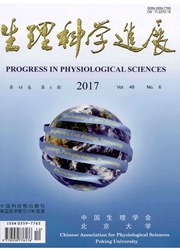

 中文摘要:
中文摘要:
近35年来,针刺治疗物质依赖的研究引起了越来越多的国内外相关学者和临床医生的关注。该领域内的研究进展大致可以分为三个主要阶段:(一)香港的温祥来医师于1973年首次报道,采用电针(两对体针和一对耳针连接电刺激)可以减轻阿片成瘾者的戒断症状(身体依赖);(二)纽约M.Smith医师(1985)领导的美国国家针刺脱毒协会(NADA)确定,仅采用耳针,不加电刺激,治疗药物依赖(身体依赖);(三)北京大学神经科学研究所(PKUNRI)韩济生教授及其同事(1992-)用特定频率的躯体穴位电刺激缓解海洛因成瘾者的戒断症状(身体依赖),并可抑制患者脱毒后对毒品的心理渴求(精神依赖)以预防复吸。本文将综述针刺干预药物依赖的临床疗效、实验研究及初步作用机制。
 英文摘要:
英文摘要:
Over the last three decades there has been an increasing interest in acupuncture treatment of substance abuse around the world. Three important steps can be identified in this field. Dr. H.L. Wen of Hong Kong was the first ( 1973 ) to report that acupuncture at 4 body points and 2 ear points combined with electrical stimulation can relieve opiate withdrawal signs in the addicts. The second major step was made by Dr. M. Smith in New York, the head of the National Acupuncture Detoxification Association (NADA) of the USA, who finalized a protocol (1985), using only ear points without electrical stimulation for the treatment of drug abuse. The recent advance in this field was made by Prof. J.S. Han and his colleagues in Neuroscience Research Institute of the Peking University, Beijing, who characterized a protocol ( 1992- ), using electrical stimulation of identified frequencies on body points to ameliorate heroin withdrawal signs and prevent relapse to heroin use. In this review, the efficacy of acupuncture and related techniques for the treatment of drug dependence in experimental settings and clinical practice will be reviewed, and the possible mechanisms underlying this effect be discussed.
 同期刊论文项目
同期刊论文项目
 同项目期刊论文
同项目期刊论文
 Multiple 100 Hz electroacupuncture treatments produced cumulative effect on the suppression of morph
Multiple 100 Hz electroacupuncture treatments produced cumulative effect on the suppression of morph Chronic cocaine exposure-induced impulsive choices are mediated by decreasing delay-dependent antici
Chronic cocaine exposure-induced impulsive choices are mediated by decreasing delay-dependent antici Morphine-induced conditioned place preference in rats is inhibited by electroacupuncture at 2 Hz: Ro
Morphine-induced conditioned place preference in rats is inhibited by electroacupuncture at 2 Hz: Ro 期刊信息
期刊信息
